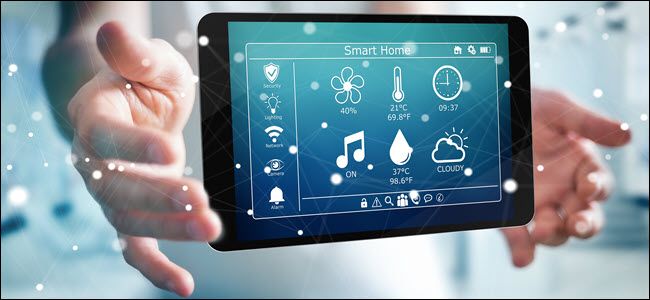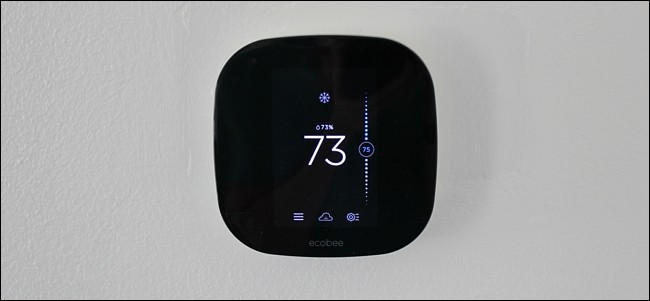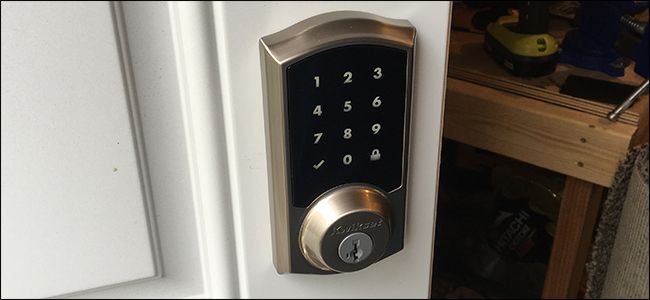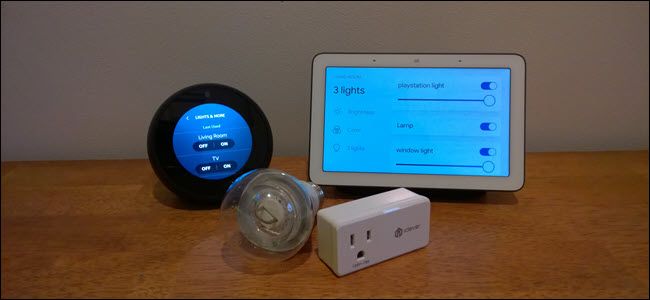Quick Links
Any home can be a smart home, whether it's a studio apartment or a mansion. It's the powerful connections that make it smart. Here's what you need to know about smart homes---and how to start putting your own together, if you're interested.
Smart Homes Are All Different
An official definition of "smart home" doesn't exist. What started as more of a buzzword has entered common usage, but no one person or company invented smart homes, nor can they claim total dominance in the field. Smart home technology is still in its infancy. Even among those who have adopted it, one smart home can look very different from another. Differences include which smart devices are in the home and even how many of these devices are present.
At its very core, a smart home is probably best defined as a living area with connected technology meant to enhance the home. This could include smart thermostats, smart lights, smart plugs or outlets, smart doorbells, and locks, or voice assistants like Google Assistant and Alexa. It could be any combination of the above, all of the above, or be other smart devices entirely.
What a smart home is for you depends on what you want to get out of it. And figuring that out requires knowing what the different smart devices do, what the possibilities are, and how much you want to spend.
Smart Thermostats Can Program Themselves
A few years ago, smart thermostats were probably the first device most owners put in their home. The promise was straight forward; the thermostat would save you more money than it cost to buy.
Through artificial intelligence, a smart thermostat will learn when you tend to leave home, when you return home, what your preferred temperature is in the winter and summer. Then, all on its own, it will start controlling the temperature of your house based on that information. Teaching is as simple as changing the temperature when you feel the need.
The process is supposed to be much simpler than programmable thermostats provide. And by only running your heat and A/C when needed, you would save money. We don't think you need a smart thermostat, but if you like the idea of a simple interface, automatic controls, and remote control than you can't go wrong with either a Nest or Ecobee.
Smart Lights and Plugs Offer Voice Control and More
Smart lights and smart plugs come in various forms. Light bulbs and plugs require no installation knowledge, while switches and outlets replace your existing traditional light switches and outlets. Which you choose depends on your level of comfort working with electrical wiring, and possibly the age of your house. Each has benefits and downsides.
Smart light bulbs, like the Philips Hue series, come in a range of colors that you can change on the fly. But you'll need one for every light you want to make smart, which means the cost can add up quickly. A smart light switch, such as those made by Lutron, can cost about as much as a smart light bulb or two while controlling many or all of the lights in a room. But you won't get color-changing features. Usually, either option has voice assistant integration, though sometimes a hub is required.
Smart outlets and smart plugs generally have the same features --- which can include automation, voice assistant integration, and energy monitoring. The main difference is the ease of installation and space. To use a smart plug like Sonoff's, plug it into an outlet then plug a device into it. No wiring is necessary. But it will stick out from your outlet, and depending on the model take up some room. TopGreener's smart outlet replaces your existing outlet, so wiring is involved. But it will be close to flush with the wall, just like your current outlets.
Smart Doorbells and Locks Provide Digital Entry
It's not just the inside of your house that you can connect to your phone and tablet. With a smart lock like Schlage's, you'll have more control of who can enter your house. Rather than hand out keys only to never have them return, you can grant pin or app access to your lock. And when it isn't needed anymore, you can revoke that access. Installing a smart lock isn't much more difficult than replacing a standard lock, so this is an easy way to get into smart homes.
Smart doorbells can be a little more tricky to install. You'll want to assess if you have working doorbell wiring to start with, as that will determine some of your options. If you do have working wiring, you can use anything from Nest to Ring, and your existing chimes will still work. If you don't, you'll need something battery powered. In either case, these doorbells will give you video when someone approaches your door, or another movement is detected. If you have a wired doorbell, you can pull up video at any time.
Between the doorbell and the lock, you'll be able to see who is at your house and, if appropriate, grant access. For example, a family member might drop by while you're out and you might want to let them in immediately.
Voice Assistants Tie Everything Together
You may notice we haven't mentioned hubs. That's because voice assistants like Google Home and Alexa are killing the smart home hub, and overall that's a good thing. With a voice assistant, you can pull your various devices together to make them work in collaboration.
That means you can control a whole room of devices---or an entire house---and can create automation routines that take care of things for you. If you frequently forget to turn off the lights or lock a door before you leave, a daily routine can solve the problem.
Much like a smart home hub, every device connected to your voice assistant can be controlled from a single app. That's much better than remembering which manufacturer app controls one device.
And, while some might say that nobody needs to talk to a house to control lights, the first time you have your hands full of groceries, and you speak to turn on the kitchen is magical. You won't want to go back to only having light switches as an option.
Smart Homes Don't Have to be Expensive
It's a common myth that smart homes are expensive, but they don't have to be. While smart home devices cost some money, so do other household purchases you don't really need, such as floor rugs and decorations.
You can always save money by not buying something. The question should be whether the cost is worth what you get out of it. Once you've done the cost/benefit math, you can pace yourself. We think a starter smart home can be put together for less than $400, and more importantly, you don't have to buy everything at once. Start with a single voice assistant, like a Google Home Mini or Amazon Echo Dot, then sprinkle in a light bulb or two. Build your smart home up over time, and you won't feel the bite of the cost so much.
Nearly every smart home is different, and that's no surprise because homes themselves are very different. Whether you live in an apartment or multi-family house, you can connect your living space to a network and gain new control of your home. At the end of the day, a smart home is whatever you want it to be.





